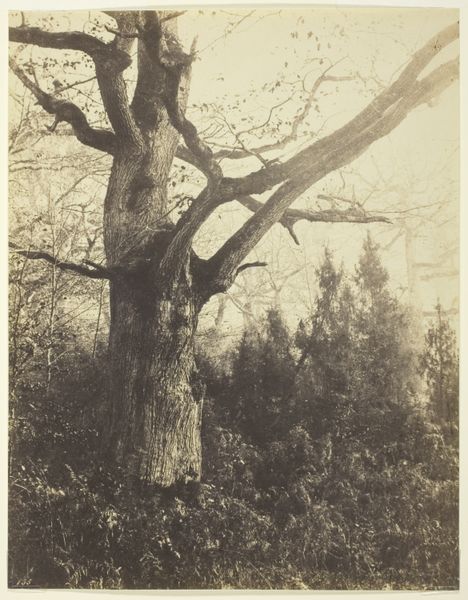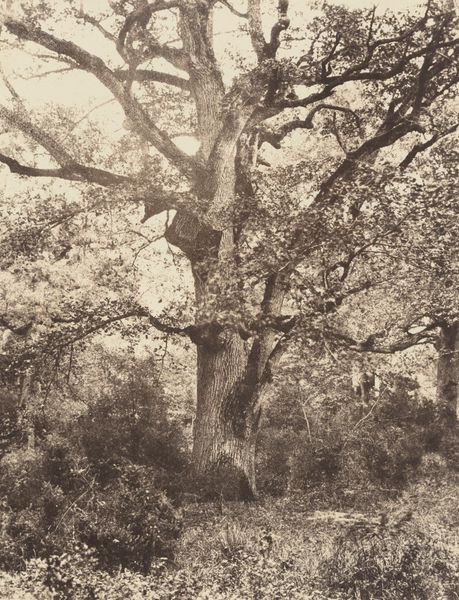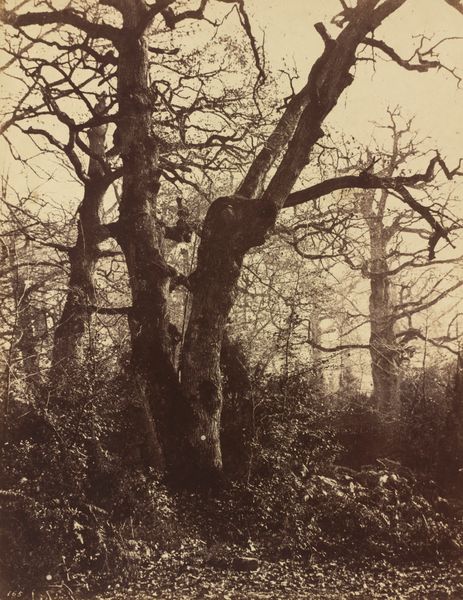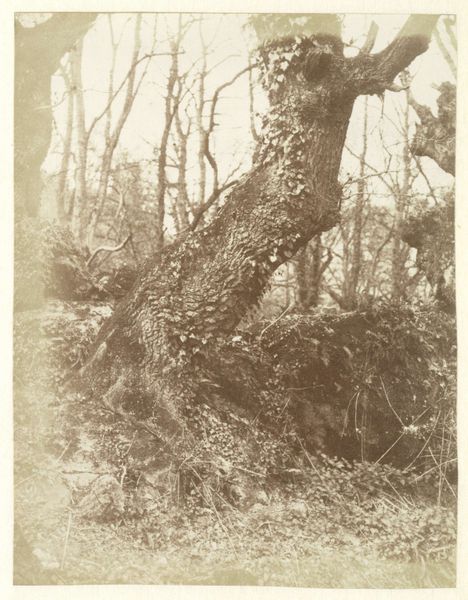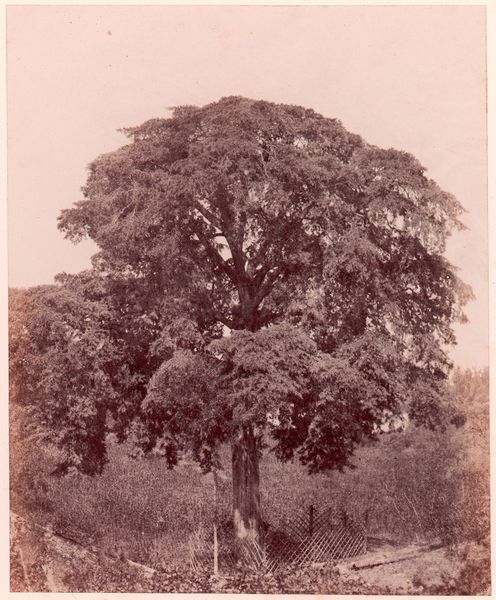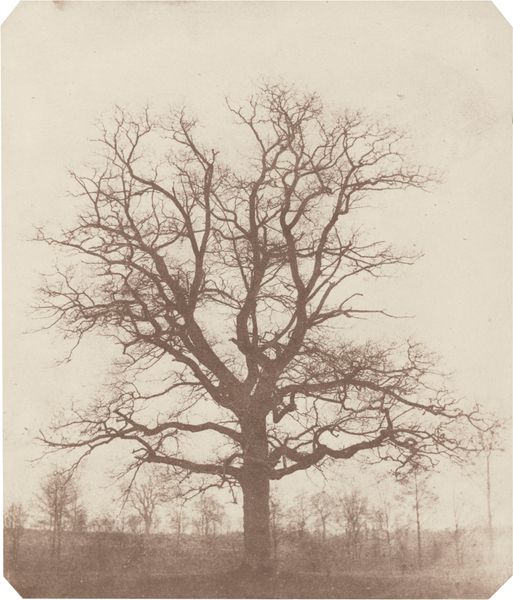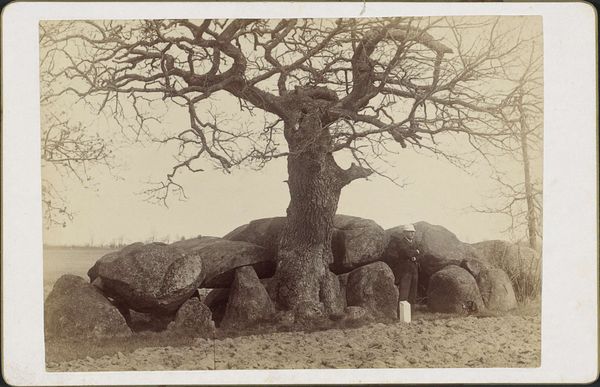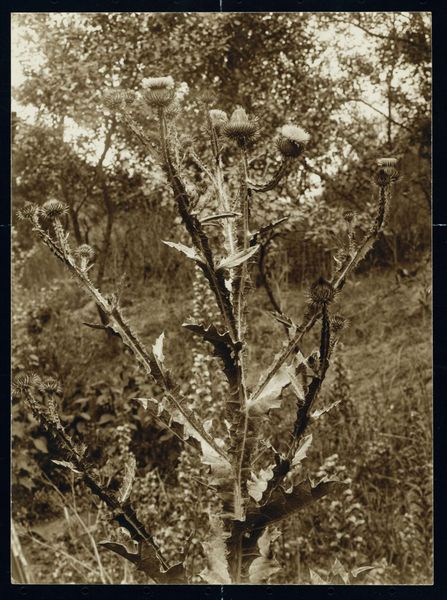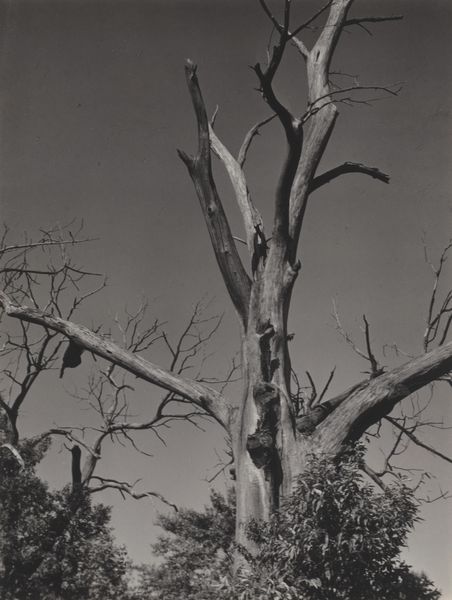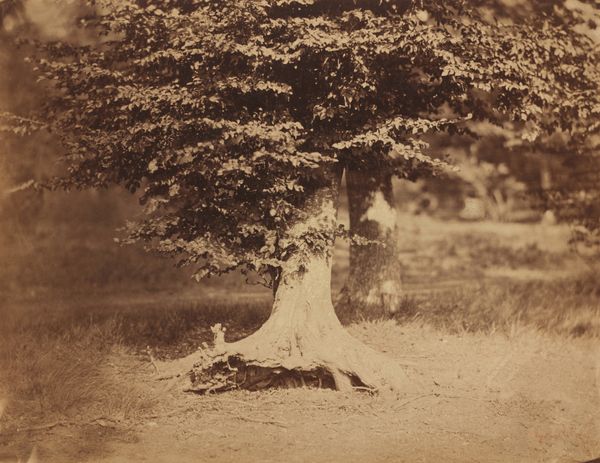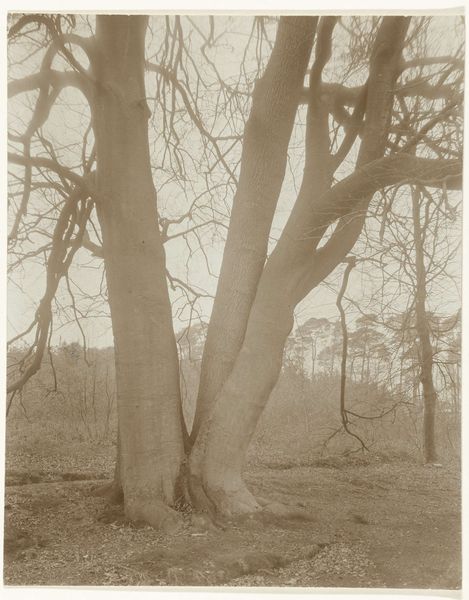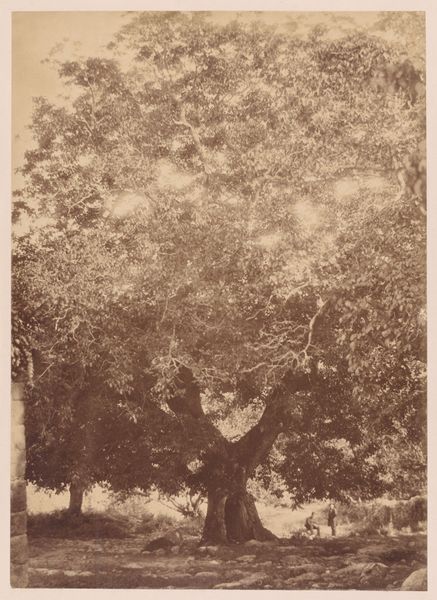
daguerreotype, photography
#
landscape
#
daguerreotype
#
photography
#
realism
Dimensions: Image: 28.7 x 22.8 cm (11 5/16 x 9 in.) Mount: 35.4 x 26.9 cm (13 15/16 x 10 9/16 in.)
Copyright: Public Domain
Désiré Charnay made this photograph, Baobab à Mohéli, using a process called Albumen silver print. Charnay, a 19th-century photographer and archaeologist, documented regions marked by French colonialism. This image transports us to Mohéli, one of the Comoro Islands, and presents a solitary baobab tree, its thick trunk and skeletal branches reaching skyward. The baobab isn't just a tree; it's a symbol of resilience, deeply rooted in African cultures and folklore. As a backdrop to colonial ambitions, this image offers a perspective into how the landscape was viewed and perhaps exploited during this period. Charnay's choice to capture the baobab might reflect a desire to document the exotic "other," or a genuine appreciation for the natural world. Either way, the photograph serves as a reminder of the complex relationship between exploration, representation, and power. It invites us to consider the human impact on the environment and the ways in which photography can both reveal and conceal the stories of a place.
Comments
No comments
Be the first to comment and join the conversation on the ultimate creative platform.
